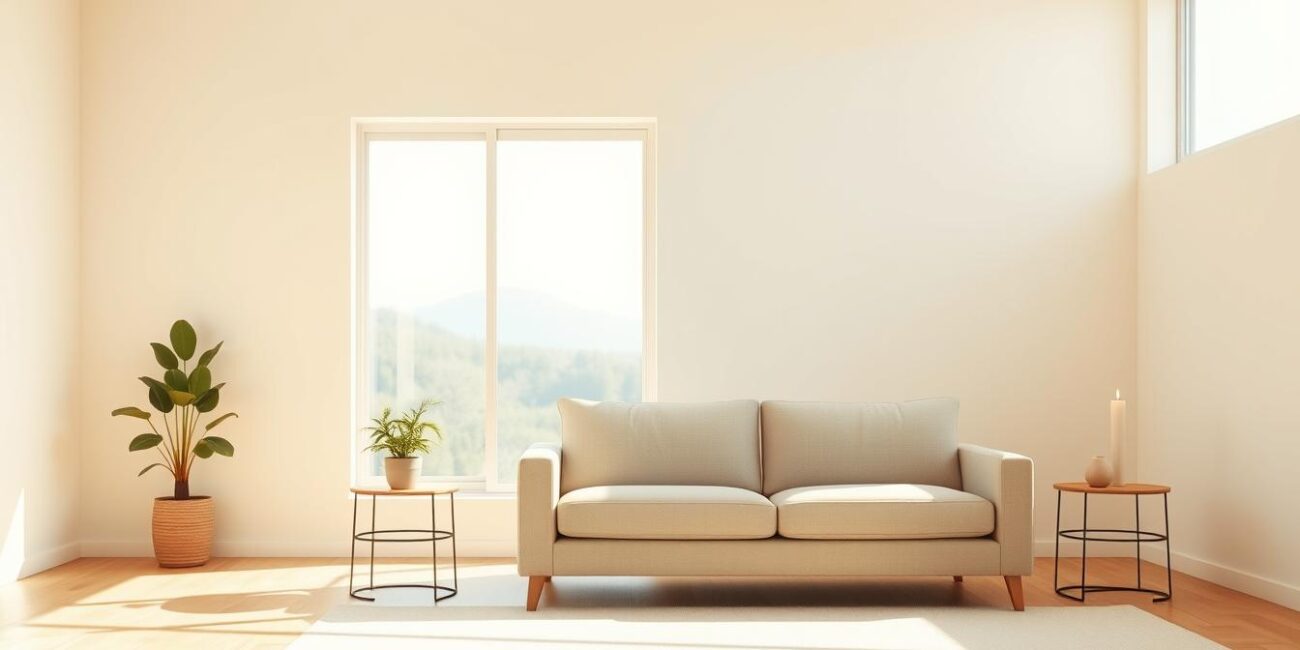Did you know that 68% of Americans feel overwhelmed by clutter in their daily lives? A recent Global Pulse study reveals that more people are turning to simplicity to combat stress and rediscover happiness. The fast-paced modern world pushes many to rethink their values and seek a calmer way of life.
This isn’t about strict rules or giving up everything you love. Instead, it’s a flexible approach to living with purpose. By focusing on what truly matters, you can reduce stress and make room for joy each day.
Whether you’re just starting or refining your journey, this guide offers practical steps to create lasting change. Let’s explore how small shifts can lead to big improvements in your life.
Introduction to Mindful Living and Minimalism
Hygge teaches us comfort doesn’t require excess. This Danish philosophy aligns with minimalist ideals, focusing on warmth and connection rather than rigid rules. Like Jacquie, who rejected extreme decluttering, many find freedom in a balanced approach.
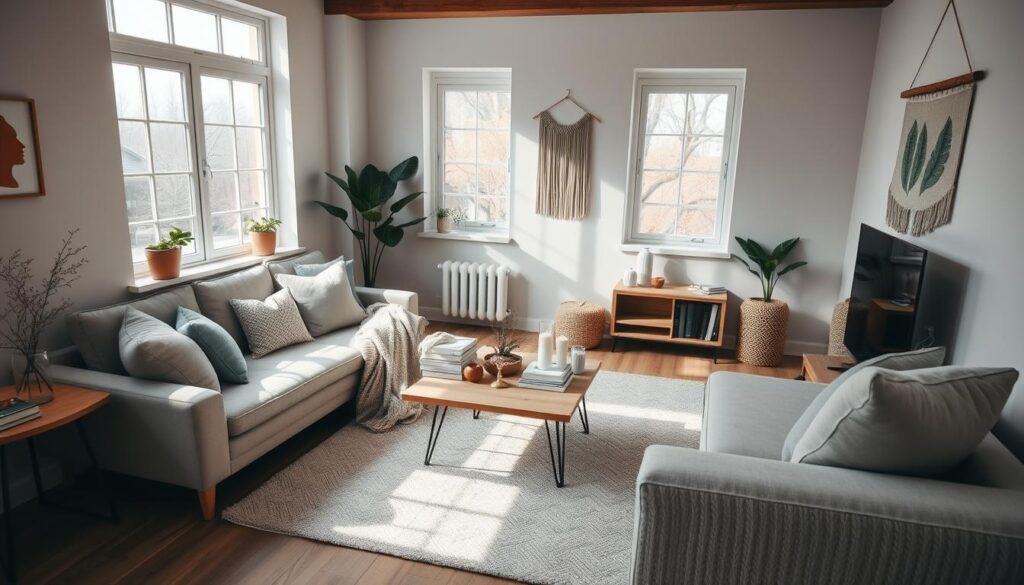
Mindfulness enhances how we experience curated spaces. A gratitude journal or nature walk—as recommended by Financial Freedom Crew—can deepen appreciation for simplicity. These small acts train the brain to savor moments, not stuff.
Hygge and minimalism share a core goal: creating environments that nurture well-being. Below, see how they complement each other:
| Hygge | Minimalism |
|---|---|
| Emphasizes cozy atmospheres | Focuses on essential items |
| Values shared experiences | Reduces distractions |
| Encourages candlelight, soft textures | Prefers clean lines and open spaces |
Neuroscience explains why these methods work. The “slow brain” state—activated by mindful activities—boosts clarity, while the “fast brain” thrives on clutter. Choosing intentional living means designing a life that honors both.
Start by asking: What truly adds joy to your days? Whether it’s a favorite chair or time with loved ones, prioritize those relationships. The rest is just noise.
What Is Minimalism? Beyond Owning Less
Minimalism isn’t about counting possessions—it’s about making them count. As Jacquie puts it, “Minimalism is a tool for intention, happiness, and reclaiming your time.” It’s a flexible framework, not a strict checklist.
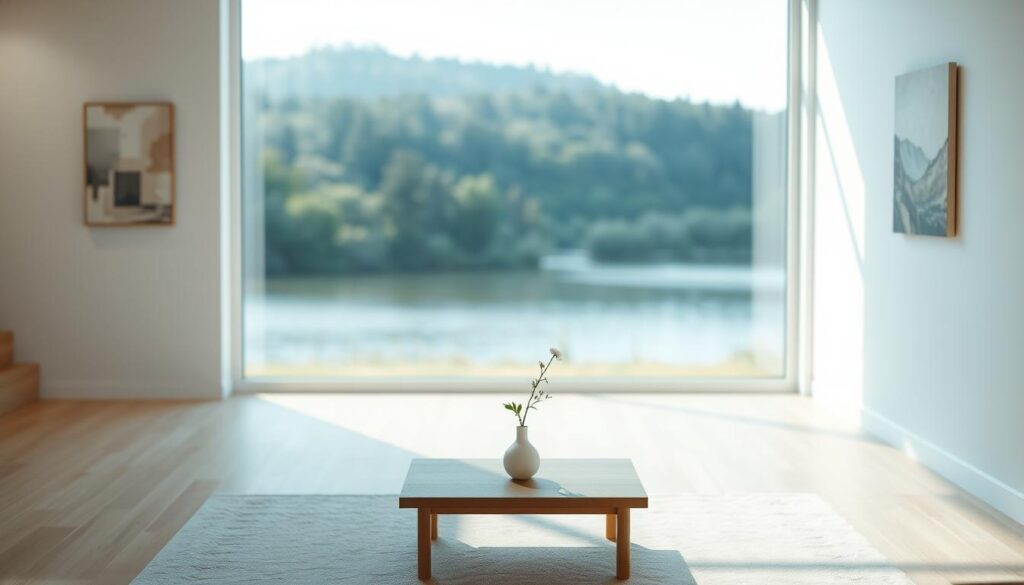
Defining Minimalism as a Tool, Not a Rulebook
Forget the “100-item challenge” myths. Joshua Becker advocates for value-based decluttering—keeping what aligns with your *core values*. A *minimalist lifestyle* isn’t empty shelves; it’s curated *space* for what matters.
Steph from Financial Freedom Crew found clutter increased her *stress* by 40%. The *Clutter Effect* shows how excess *things* drain focus. But minimalism flips the script: fewer distractions, more clarity.
How Minimalism Reduces Stress and Chaos
Hoarding psychology thrives on “what if” fears. Intentional *habits* replace impulse buys with mindful choices. Keep grandma’s quilt if it sparks *joy*; donate the unused gadgets collecting dust.
This approach isn’t about lack—it’s about freedom. Less clutter means more room for creativity, calm, and connection. Start small: one drawer, one decision at a time.
The Power of Intentional Living
Neuroscience reveals that 95% of daily behaviors happen without conscious thought—what if you could change that? Intentional living flips the script, replacing autopilot habits with choices that align with your deepest values. It’s not about perfection; it’s about progress.
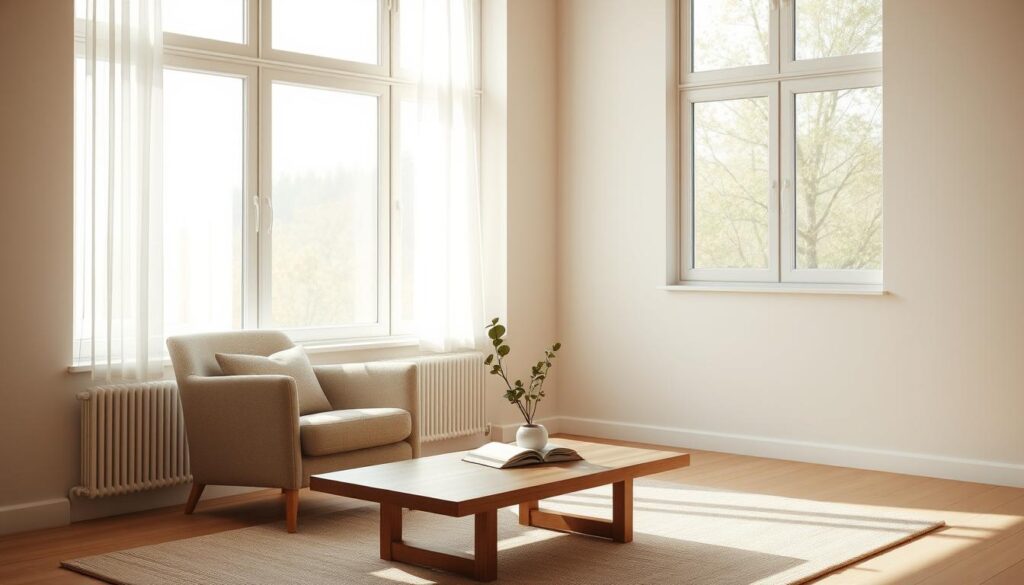
Aligning Actions with Core Values
Joshua Becker’s *Helpful Guide to Intentional Living* suggests starting with a simple question: “What do I want my life to stand for?” Define your purpose first, then let it guide your decisions—from work to relationships.
Marta Locklear, a productivity coach, sets daily intentions with a 3-minute ritual. She writes one value (e.g., “connection”) and chooses tasks that reflect it. This small act shifts her attention from busyness to meaning.
Intentional Living vs. Autopilot Mode
Autopilot thrives on routines like zombie scrolling. Research-backed pause techniques help: Before opening an app, take a breath. Ask, “Is this serving my goals?” These micro-moments build awareness.
Consider Sarah, a marketing director who left her high-pressure job to teach yoga. While society praised her title, her core values craved creativity and wellness. Her intentional career change cut stress by 60%.
Try a trigger system: “If office door, then deep breath.” These cues anchor you in the present, turning daily transitions into opportunities for mindful choices.
Mindfulness Practices for Daily Life
Small moments of awareness can transform your entire day. These techniques help you stay grounded without overhauling your routine. They’re designed to fit seamlessly into daily life, whether you’re at home, work, or on the go.
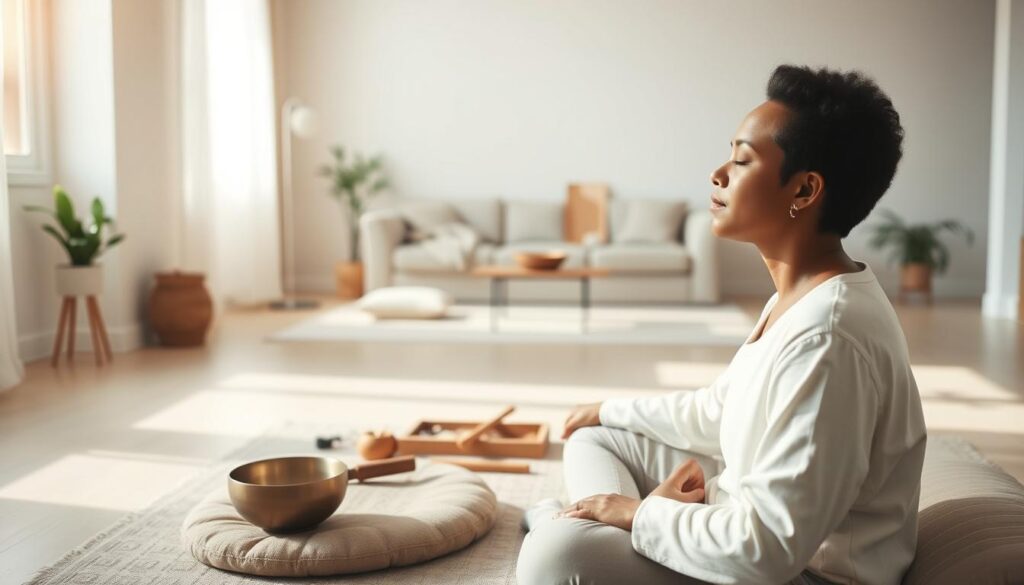
1. The 3-Breath Morning Reset
Before checking your phone, take three deep breaths. Inhale for four counts, exhale for six. Set an intention like “Today, I choose calm”. This ritual quiets the mind and primes your focus.
2. Hunger Scale Check-In
Rate your hunger from 1 (starving) to 10 (stuffed) before meals. It prevents overeating and turns eating into a mindful act. Notice textures and flavors—no distractions.
3. Sticky Note Reminders
Place prompts like “Breathe” on your laptop or fridge. These pattern interrupts activate your “slow brain,” reducing impulsive reactions.
4. Movement with Breath Sync
Match breaths to motions during workouts. In yoga, inhale as you reach up; in walking, step with each exhale. It’s like meditation in motion.
5. Traffic Compassion Technique
When drivers cut you off, silently wish them safety. This reframes frustration into empathy, a proven way to reduce stress behind the wheel.
How These Habits Sharpen Decisions
Pausing creates space between stimulus and response. A study in the Journal of Neuroscience found that even 10 seconds of delay improves choices. Over time, these micro-practices rewire your brain for clarity.
How to Start a Minimalist Lifestyle
Clutter-free spaces lead to clearer minds—here’s how to achieve both. Adopting a minimalist lifestyle isn’t about perfection. It’s about creating room for what truly matters, one step at a time.
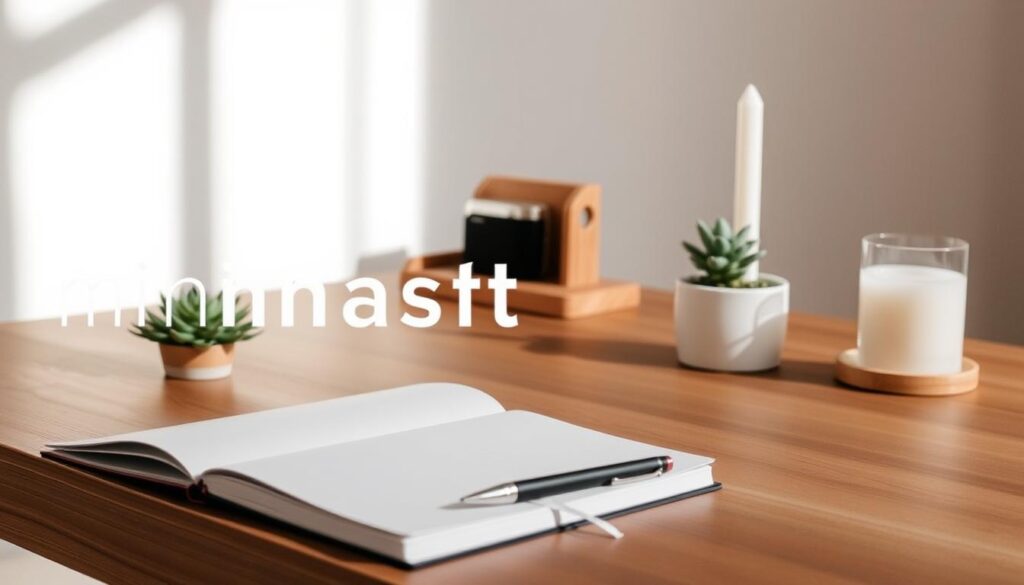
Decluttering: Physical and Mental Spaces
Start with the *20/20 Rule*: If an item is replaceable for under $20 in 20 minutes, let it go. This cuts decision fatigue and keeps your home focused on essentials.
For sentimental items, try *sentimental saturation*. Hold each heirloom and ask: “Does this bring joy or obligation?” Keep only what resonates deeply.
Mental clutter needs attention too. Shawna’s reflection exercises—like jotting down three daily wins—help clear emotional space. Pair this with a *clutter autopsy* to spot patterns (e.g., impulse buys during stress).
Curating What Truly Adds Value
Follow this room-by-room timeline to avoid overwhelm:
- Week 1: Tackle junk drawers and closets.
- Week 2: Sort kitchen gadgets and expired pantry items.
- Week 3: Digitize paperwork and declutter desks.
Join the free *30-Day Minimalism Challenge* to reinforce habits. Each day, remove one unneeded item and reflect on the changes. Over time, you’ll naturally prioritize quality over quantity.
Remember: Minimalism isn’t about lack—it’s about making things work for you. Keep what serves your goals, and release the rest with gratitude.
Integrating Mindfulness and Minimalism
The quiet power of combining awareness with simplicity reshapes ordinary moments. Together, they create a way of being that values quality over quantity—whether in your home or your daily life. This synergy turns routines into rituals and spaces into sanctuaries.
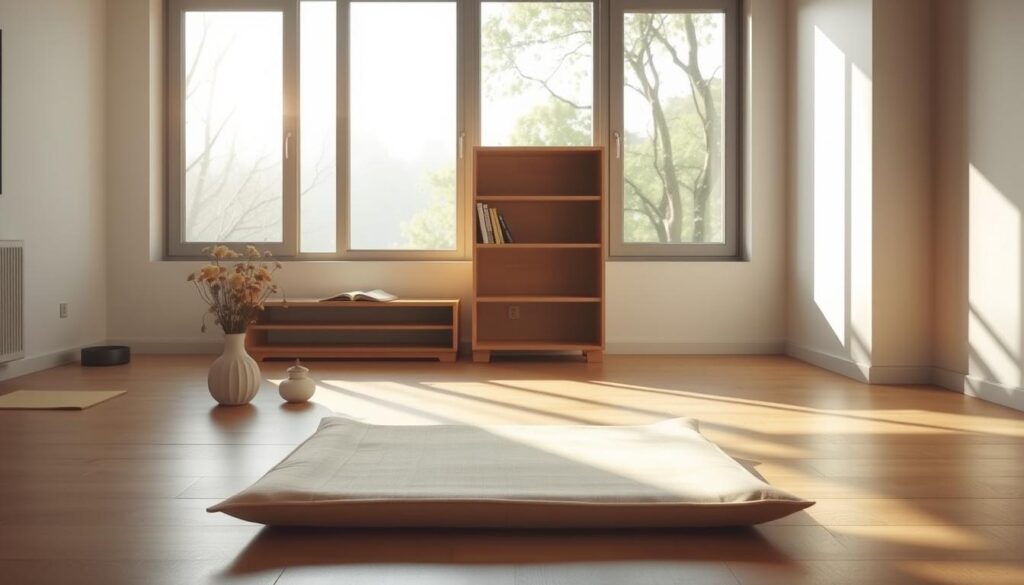
Creating Daily Routines for Balance
Start your day with a 5-minute space appreciation. Sit in your favorite chair, breathe deeply, and notice one detail you love about your surroundings. This pairs meditation with minimalism’s focus on curated environments.
At night, try a gratitude inventory:
- Name three objects that served you well today.
- Release thoughts about tomorrow’s to-dos.
- Dim lights to signal your brain: “This is time for rest.”
The Synergy Between Presence and Simplicity
Before buying anything, use this checklist:
| Question | Purpose |
|---|---|
| Do I need this? | Filters impulse buys |
| Does it align with my core values? | Ensures intentionality |
| Will it spark joy for years? | Prioritizes lasting worth |
Neuroplasticity research shows repeating these experiences strengthens decision-making pathways. Even micro-sabbaticals—like pausing to feel sunlight during chores—build new neural habits.
Overcoming Common Challenges
Ever felt pressured to keep up with others’ expectations while trying to simplify your life? You’re not alone. Many face hurdles like social norms or packed schedules that clash with their goals. The good news? Small shifts can help you stay on track.
Dealing with Social Pressures
Gift-giving guilt is real. Try these scripts:
- “Let’s celebrate with experiences!” Suggest a picnic over physical gifts.
- “I’m focusing on quality over quantity.” Politely decline clutter-prone items.
For small-space gatherings, adapt Shawna’s hygge principle: Use soft lighting and shared decor. A single candle and cozy blankets make any area inviting. Others may not understand your choices at first—but consistency helps.
Staying Consistent Amid Busy Schedules
Pair new habits with existing routines:
- Habit stacking: After brushing your teeth, take three deep breaths.
- Failure resets: Use traffic pauses to refocus. Even 15 seconds counts.
Protect your time fiercely. A digital detox plan helps: Turn off non-essential notifications. Batch-check emails twice daily. Over time, these choices create space for what matters—without adding stress.
Conclusion: Your Journey to a More Intentional Life
Your path to simplicity starts with one small step—no rigid rules required. Like Jacquie’s “choose your own adventure” approach, blend hygge’s comfort with purposeful choices. Curate what brings joy, not clutter.
Financial Freedom Crew’s research shows habits form in 3 months. Start small: a gratitude journal, weekly decluttering, or mindful pauses. Track progress for 6 months—notice how life feels lighter.
Intentional living isn’t about perfection. It’s designing a life that honors your values. Your rules, your rhythm, your renewal. Begin today—one breath, one choice at a time.






